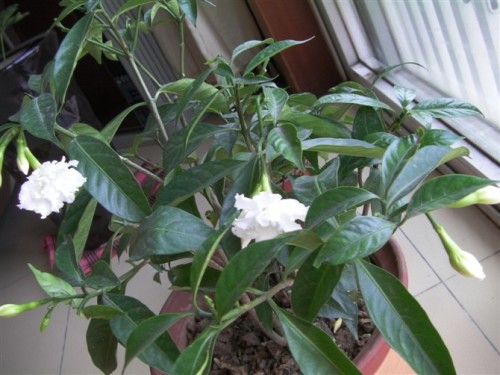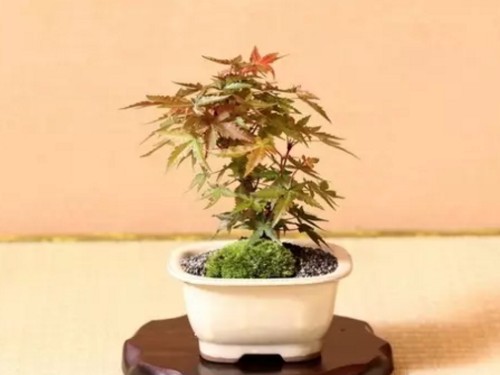Breeding methods and matters needing attention of Petunia
Petunia is a long sunshine plant, which requires sufficient sunshine during the growing period. under normal light conditions, it takes about 100 days from sowing to flowering. Double spherical, very rich in color, such as white, red, purple, blue, yellow and mosaic, edge, etc., very beautiful. The flowering period is from April to frost, and the flower can bloom continuously in warm areas in winter. Petunia is easy to raise and plant, with long flowering period and colorful flowers. It is often used as potted plants, hanging pots, flower beds and flower beds to beautify. Large area cultivation has the effect of ground cover, magnificent landscape and pleasing to the eye. When petunia is cultivated in the greenhouse in winter, the stems and leaves grow luxuriantly under the condition of low temperature and short days, but it is difficult to plant flowers. When the spring enters the long-day sunshine, the buds differentiate quickly from the top of the stems and leaves. After that, normal culture management can be carried out.

Culture methods:
1. Soil: soil that requires slightly acidic, loose, fertile and well-drained soil. Generally speaking, basin soil can be prepared with semi-uniform mixing of sandy loam and rotten leaf soil. Petunia should use fertile, permeable and slightly acidic sandy soil.
2. Temperature: petunia likes to be warm. The optimum temperature for its growth is 13: 18 ℃, and the winter temperature is 4: 10 ℃. It can withstand the high temperature of more than 35 ℃ in summer and stop growing when the temperature is lower than 4 ℃ in winter. Petunia is the most suitable for seed germination at 20 ℃. The optimum temperature for its growth is 13-18 ℃, and the winter temperature is 4-10 ℃. If the temperature is lower than 4 ℃, the plant growth stops. It can withstand high temperature of more than 35 ℃ in summer.
3. Illumination: Petunia is a long-day plant, which requires strong light conditions for photosynthesis to proceed smoothly, so sufficient light should be given to both potted and ground plants. If the sun is sufficient, the growth is strong, the leaves are luxuriant and the flowers are numerous; if the light is not enough, the branches and leaves are easy to grow, and the flowering quality is poor. Petunia belongs to long-sunshine plants and likes sunny environment. Under the condition of low temperature and short days, the stems and leaves grow luxuriantly, but the flowering is very difficult. When spring enters long sunshine, buds quickly differentiate from the top of stems and leaves.
4. Watering: petunia like to be wet, afraid of drought and waterlogging. The three seasons of spring, summer and autumn should be often watered, and the basin soil should be watered immediately, and it would be better to keep it slightly moist. The roots are too wet and rotten, the leaves are too dry and yellow, and the basin soil is not dry and slightly moist in winter. Usually watering should be appropriate to prevent too dry or too wet. Timely supplementary watering is needed in summer to keep the basin soil moist without stagnant water, and timely drainage and waterlogging prevention are needed in the rainy season.
5. Fertilization: petunia generally apply dilute liquid fertilizer every 10 days or so during the growth period, and more phosphate fertilizer should be applied during bud gestation to facilitate the colorful flowers. Of course, bio-organic fertilizer is better for fertilization. Petunia likes to be fat and tolerant to barren. If you fertilize too much than frequently, it is easy to grow in vain and spend less. Nitrogen, phosphorus and potassium compound fertilizer is applied once every 15 days or so, and 0.2% potassium dihydrogen phosphate solution is sprayed to the leaves once a month to promote its multi-pregnant buds, many and beautiful flowers, and no fertilization when entering the house in winter.
6. Pruning: when the seedling grows to about 10 cm high, the heart is removed to promote its sprouting lateral branches, then bloom more. If there is no need to leave seeds after each flower fade, the residual flowers should be cut off in time, and the branches should be cut short, and the lateral branches can continue to germinate and blossom continuously.
Matters needing attention in petunia breeding:
1. After the beginning of winter, petunia has a slow metabolism and needs very little water and fertilizer, so it can continue to water and fertilize according to the actual needs.
2. Watering follows the principle of no drying and no watering, and watering means thorough watering. If the basin soil is not too dry, do not water, to avoid excessive watering caused by rotting roots and leaves or causing young branches to grow, affecting flower bud differentiation and weakening cold resistance.
3. The indoor air is dry in winter. Petunia should often be sprayed with water close to room temperature to wash the leaves to remove dust and keep clean, so as to facilitate photosynthesis, but spraying water can not increase moisture in the basin to prevent rotting roots.
Time: 2019-06-01 Click:
- Prev

Culture method of potted Bermuda
Gouya flowers have dense branches and leaves, compact plant type, pure white flowers, elegant and simple flowers, long flowering period, and suitable for hedgerows, flower diameters or large potted plants. The green leaves of this flower are green, and the flowers are crystal white and fragrant and handsome. It is an excellent potted flower. [soil] the dog tooth flower likes to be warm and humid.
- Next

Maintenance methods of Red Maple Bonsai
The production of red maple potted plants is not without careful care, because only careful care can make the red maple grow luxuriantly, the leaves will be red and beautiful, and the ornamental value will be higher. Bonsai can only be enjoyed by careful care. Compared with other plants, bonsai has a more edifying feeling.
Related
- Fuxing push coffee new agricultural production and marketing class: lack of small-scale processing plants
- Jujube rice field leisure farm deep ploughing Yilan for five years to create a space for organic food and play
- Nongyu Farm-A trial of organic papaya for brave women with advanced technology
- Four points for attention in the prevention and control of diseases and insect pests of edible fungi
- How to add nutrient solution to Edible Fungi
- Is there any good way to control edible fungus mites?
- Open Inoculation Technology of Edible Fungi
- Is there any clever way to use fertilizer for edible fungus in winter?
- What agents are used to kill the pathogens of edible fungi in the mushroom shed?
- Rapid drying of Edible Fungi

